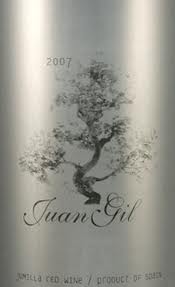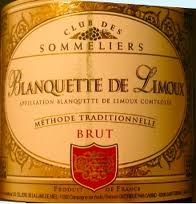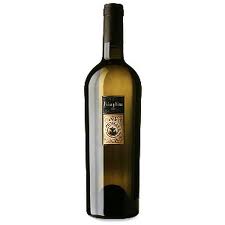Randall Grahm, the estimable California winemaker, often calls them his “lovable orphans,” or some such term of endearment. He is speaking of the obscure grape varieties of the world that are his passion.
 The wines of Bonny Doon have long been a road map of sorts for curious wine enthusiasts, crafted as they often are from grapes no one ever heard of outside of the old country. The old country could be anywhere, but it’s mostly the south of France, the width and breadth of Italy, and remote regions of Spain.
The wines of Bonny Doon have long been a road map of sorts for curious wine enthusiasts, crafted as they often are from grapes no one ever heard of outside of the old country. The old country could be anywhere, but it’s mostly the south of France, the width and breadth of Italy, and remote regions of Spain.
This is where indigenous grapes stand against the tide of the so-called “international” grape varieties – Cabernet Sauvignon, Merlot, Chardonnay, Pinot Noir and Sauvignon Blanc – that seem to be crowding the landscape with each passing vintage.
Every once in a while a wine made from indigenous grapes breaks through and goes global. Witness the popularity of Albarino from Spain’s Rias Baixas, a white wine that was virtually unknown 20 years ago. More recently Austrian Gruner Veltliner and Argentine Malbec have produced a global following. There is a common thread throughout: affordability, accessibility and quality. The best wines made from those grapes grown in those places are simply delicious.
These once-obscure gems are secrets no more. It’s now time for the curious to move on, for the world of wine is chock full of other hidden treasures. Just to name a few:
 Blanquette or Cremant de Limoux are sparkling wines from an area of the Languedoc around the Abbey of Saint-Hilaire, where legend holds that the method for producing sparkling wine was formulated by the monks in residence, who shared their secret with Dom Perignon as he made the pilgrimage from the Abbey of Hautvillers in France’s Champagne region to Santiago de Compostela in northwestern Spain. These are wonderful yet inexpensive bubblies. What distinguishes Blanquette from Cremant is the selection of grapes. Blanquette is made mostly from the Mauzac grape; Cremant from Chenin Blanc and Chardonnay.
Blanquette or Cremant de Limoux are sparkling wines from an area of the Languedoc around the Abbey of Saint-Hilaire, where legend holds that the method for producing sparkling wine was formulated by the monks in residence, who shared their secret with Dom Perignon as he made the pilgrimage from the Abbey of Hautvillers in France’s Champagne region to Santiago de Compostela in northwestern Spain. These are wonderful yet inexpensive bubblies. What distinguishes Blanquette from Cremant is the selection of grapes. Blanquette is made mostly from the Mauzac grape; Cremant from Chenin Blanc and Chardonnay.
Falanghina is a white wine from Campania, in southern Italy near Naples. It has long been considered inferior to the star white wines of the region – Greco di Tufo and Fiano di Avellino – and, as a result, is far less expensive. The affordability factor has drawn attention to Falanghina and its virtues, which include an uncommonly intense minerality. Falanghina also exhibits floral notes, nuances of yellow and red citrus and, sometimes, toasted almond. As the assessment of Falanghina is revised upward, expect prices to rise as well. Still, very good to excellent Falanghina can be found in the $15 range.
Jumilla is a red wine from the rugged Spanish province of Murcia, near the town of Yecla in the southeast corner of Spain. The wine industry of this region enjoyed a renaissance throughout the 1990s, after a bout with phylloxera (a vine pest) necessitated replanting most of the vineyards. The primary grape is Monastrell, which is called either Mataro or Mourvedre in other parts of the world. The high elevation of the otherwise hot wine-growing region provides a nurturing environment for the Monastrell grape and enables it to retain acidity and freshness. The wines of Jumilla are bold and full-bodied, but with a modicum of elegance. And they’re generally dirt cheap (less than $20) given the quality.
 Negroamaro is a red wine made exclusively in southern Italy, mostly around Salento in the region of Puglia. Negroamaro makes a rustic, sometimes tannic wine that is often blended with Malvasia Nera, Sangiovese or Montepulciano. Its name is derived from the color of the grape (negra) and a slightly bitter (amaro) aftertaste. This earthy wine exhibits red and black fruit flavors when young, and develops aromas of leather and forest floor as it evolves. It generally retails for less than $20.
Negroamaro is a red wine made exclusively in southern Italy, mostly around Salento in the region of Puglia. Negroamaro makes a rustic, sometimes tannic wine that is often blended with Malvasia Nera, Sangiovese or Montepulciano. Its name is derived from the color of the grape (negra) and a slightly bitter (amaro) aftertaste. This earthy wine exhibits red and black fruit flavors when young, and develops aromas of leather and forest floor as it evolves. It generally retails for less than $20.
Picpoul de Pinet is a crisp, floral white wine produced in the Coteaux du Languedoc, near Narbonne in the south of France. It has a mineral edge, and firm acidity that makes it the perfect foil for shellfish, particularly freshly shucked oysters, which are common in the region. Fruit aromas trend toward tropical and citrus, such as pineapple, grapefruit and lime. These wines never see the inside of an oak barrel, so they are fresh, clean and crisp. They rarely retail for more than $15, and around $10 is the norm.
8
